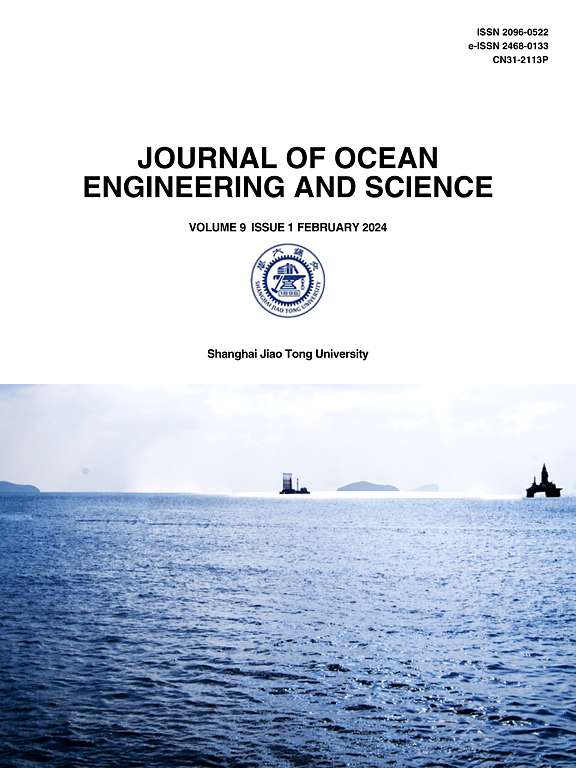A two-dimensional high-order explicit analytical solution model for symmetric wedges entering water
IF 11.8
1区 工程技术
Q1 ENGINEERING, MARINE
引用次数: 0
Abstract
The slamming phenomenon is a highly concerned fluid structure coupling problem in the engineering field. Based on the original MLM(Modified Logvinovich Mode), an explicit solution for the higher-order MLM slamming model is derived. The second-order velocity potential, pressure distribution and slamming force can be quickly evaluated. The derived second-order MLM slamming model is compared with the first-order solution and numerical results. Sensitivity analysis reveals that for small angles (), both first-order and second-order MLM solutions can provide sufficiently accurate slamming solutions. However, for larger deadrise angles (), the second-order solution becomes increasingly significant. The excess second-order pressure cannot be ignored, achieving a proportion. The accuracy of the first-order MLM solutions cannot be guaranteed for large cases, with an error of up to , with the difference in slamming force growing more pronounced as increases. For larger values, the second-order MLM solution is more consistent with the numerical results, while the accuracy of the first-order MLM solution decreases. The study concludes that the second-order MLM model expands the applicability of the MLM slamming model to larger deadrise angles, providing a new method for rapid assessment of slamming problems in structures with large .
对称楔入水的二维高阶显式解析解模型
轰击现象是工程领域中备受关注的流固耦合问题。在原传销(修正Logvinovich模型)的基础上,导出了高阶传销冲击模型的显式解。二阶速度势、压力分布和撞击力可以快速计算。将推导的二阶传销撞击模型与一阶解和数值结果进行了比较。敏感性分析表明,对于小角(β≤15°),一阶和二阶传销方案都能提供足够精确的摔角解。然而,对于较大的死角(β + gt;15°),二阶解变得越来越重要。超二次压力不可忽略,占比达到60%。对于大的β情况,一阶MLM解的精度不能保证,误差高达48%,随着β的增加,冲击力的差异变得更加明显。当β值较大时,二阶解与数值结果更加吻合,而一阶解的精度降低。研究表明,二阶MLM模型扩展了MLM撞击模型在更大死角下的适用性,为大β结构撞击问题的快速评估提供了一种新的方法。
本文章由计算机程序翻译,如有差异,请以英文原文为准。
求助全文
约1分钟内获得全文
求助全文
来源期刊

Journal of Ocean Engineering and Science
Multiple-
CiteScore
11.50
自引率
19.70%
发文量
224
审稿时长
29 days
期刊介绍:
The Journal of Ocean Engineering and Science (JOES) serves as a platform for disseminating original research and advancements in the realm of ocean engineering and science.
JOES encourages the submission of papers covering various aspects of ocean engineering and science.
 求助内容:
求助内容: 应助结果提醒方式:
应助结果提醒方式:


